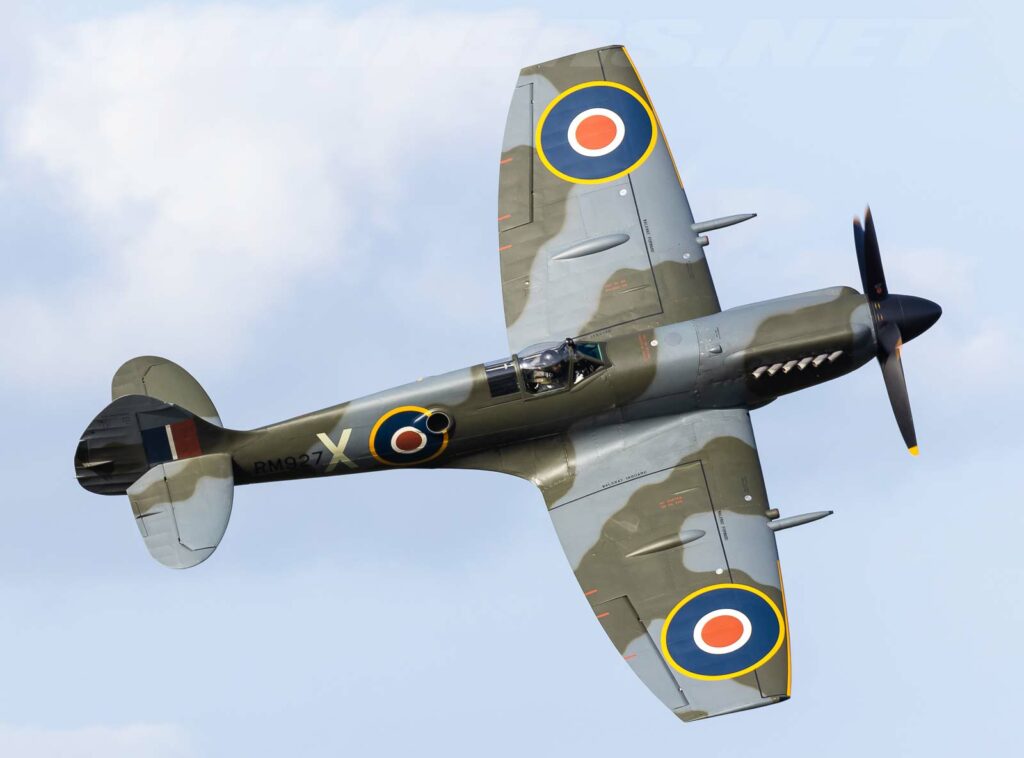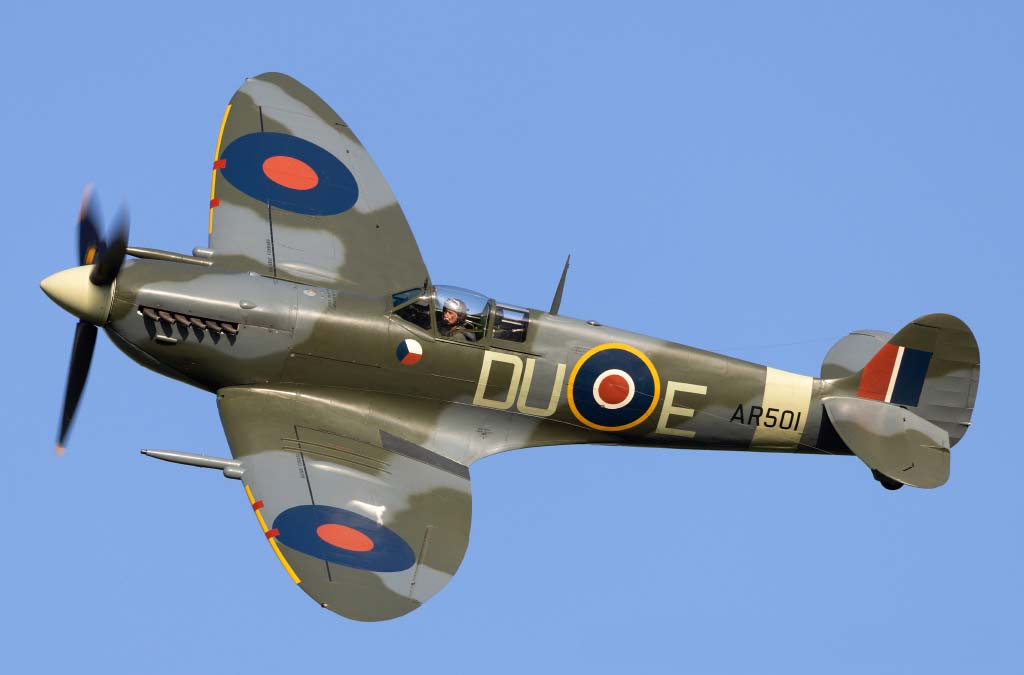The Supermarine Spitfire, a British single-seat fighter aircraft, excelled in WWII with its Rolls-Royce Merlin engines, distinctive elliptical wings, and exceptional agility.
This article delves into the Supermarine Spitfire, a quintessential British fighter aircraft of World War II. We explore its historical context, design innovations, performance metrics, and its role in military combat. The Spitfire’s development, influenced by global conflict needs, its advanced design, superior performance in comparison to contemporaries, and significant military engagements are discussed, providing a comprehensive understanding of this iconic aircraft.
The Supermarine Spitfire stands as an emblem of British resilience and technological prowess during World War II. Renowned for its role in the Battle of Britain, the Spitfire’s legacy extends far beyond its combat achievements, symbolizing a pivotal era in aviation history.

History of the Development of the Supermarine Spitfire
In the 1930s, Europe was inching towards another major conflict, necessitating advancements in military technology, particularly in aviation. The Supermarine Spitfire was born out of this urgent need for superior air defense capabilities. Developed by Supermarine Aviation Works, a subsidiary of Vickers-Armstrongs, the Spitfire was designed by R.J. Mitchell, a visionary aeronautical engineer.
The program was launched in response to the Air Ministry’s Specification F.7/30. Mitchell, drawing from his experience with high-speed aircraft, aimed to create a fighter that was not only fast but also agile and well-armed. The first prototype, the Type 300, took to the skies on March 5, 1936, marking a new chapter in aerial warfare.
The Spitfire did not have a NATO nickname, as it was developed and deployed before NATO’s establishment in 1949. However, its name became synonymous with agility, speed, and British aeronautical ingenuity during WWII.
Design of the Supermarine Spitfire
The Spitfire’s design was revolutionary. It featured elliptical wings with a thin cross-section, providing an excellent lift-to-drag ratio. This wing design allowed for higher speeds and better maneuverability, a significant advantage in dogfights. The aircraft was primarily constructed of aluminum alloy, with a wingspan of 36 feet 10 inches (11.23 meters) and a length of 29 feet 11 inches (9.12 meters).
One of the design drawbacks was its relatively narrow undercarriage, which made landings tricky, especially for inexperienced pilots. However, its advanced features, such as the all-metal monocoque construction and retractable undercarriage, were ahead of its time and contributed significantly to its combat performance.
Performance of the Supermarine Spitfire
Powered by the Rolls-Royce Merlin engine, the Spitfire was a force to be reckoned with. The Merlin engine, in its various iterations, produced between 1,030 to 1,700 horsepower. This power enabled the Spitfire to reach top speeds of around 370 mph (595 km/h) and a service ceiling of approximately 36,000 feet (11,000 meters).
In terms of range, the Spitfire could cover roughly 470 miles (756 kilometers) on internal fuel. Compared to its contemporaries like the German Messerschmitt Bf 109 and the Japanese Mitsubishi A6M Zero, the Spitfire held its own, often surpassing them in agility and high-altitude performance.

Military Use and Combat of the Supermarine Spitfire
The Spitfire’s armament typically consisted of eight .303 inch Browning machine guns, although later versions incorporated cannons and even ground attack capabilities. It saw extensive combat during WWII, playing a pivotal role in the Battle of Britain. The Spitfire’s agility and speed made it a formidable opponent against the Luftwaffe’s fighters.
This aircraft was also sold to several Allied countries and continued to see service post-WWII. It was eventually replaced by more advanced jet fighters, such as the Hawker Hunter and the Gloster Meteor. Despite being phased out of active service, the Spitfire remains a symbol of aerial combat excellence.
The Supermarine Spitfire was more than just an aircraft; it was a symbol of a nation’s determination and technological advancement during a time of global conflict. Its innovative design, superior performance, and significant role in military history not only made it a legendary fighter but also a timeless icon in the annals of aviation.
Back to the Warbirds section.